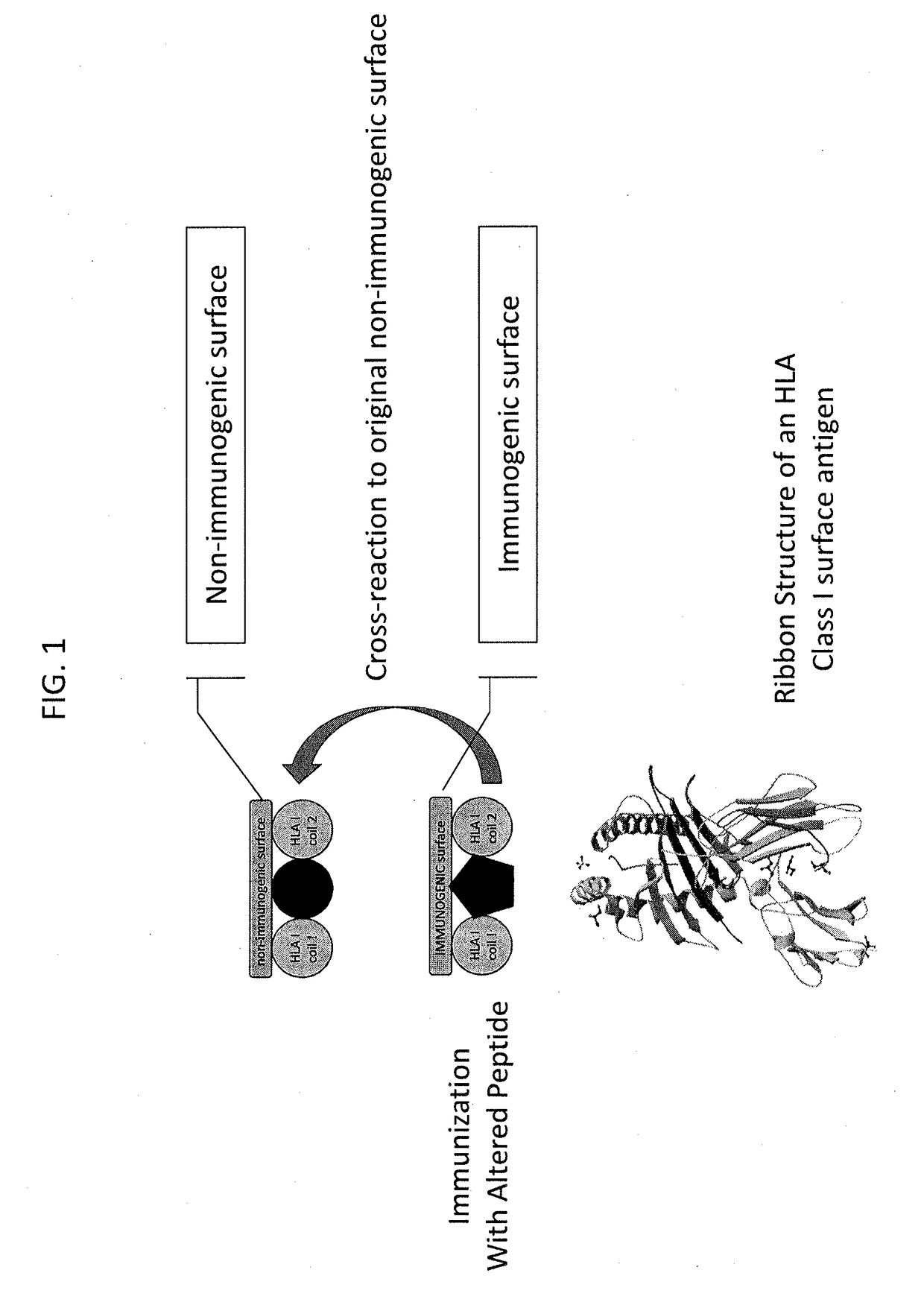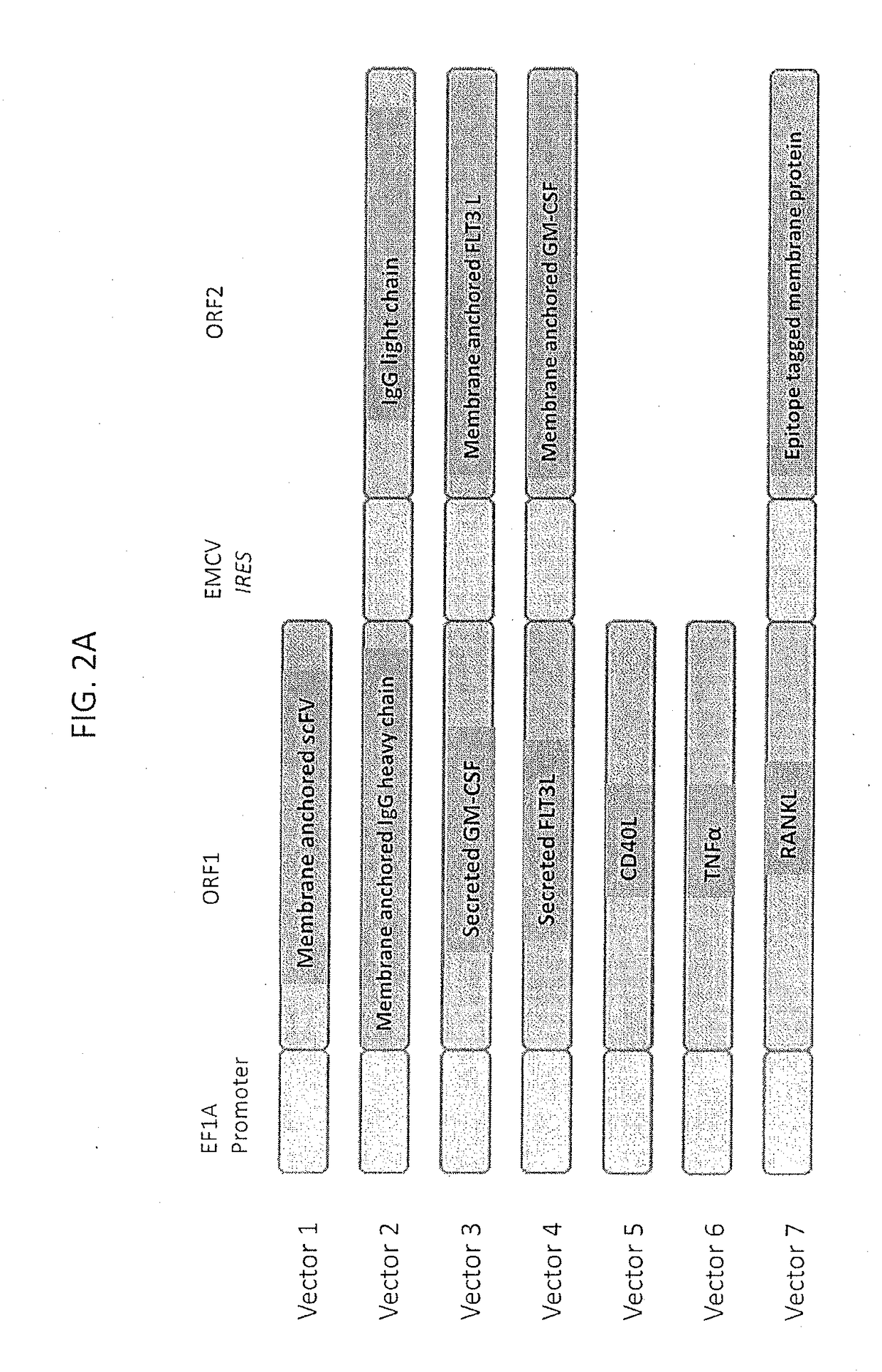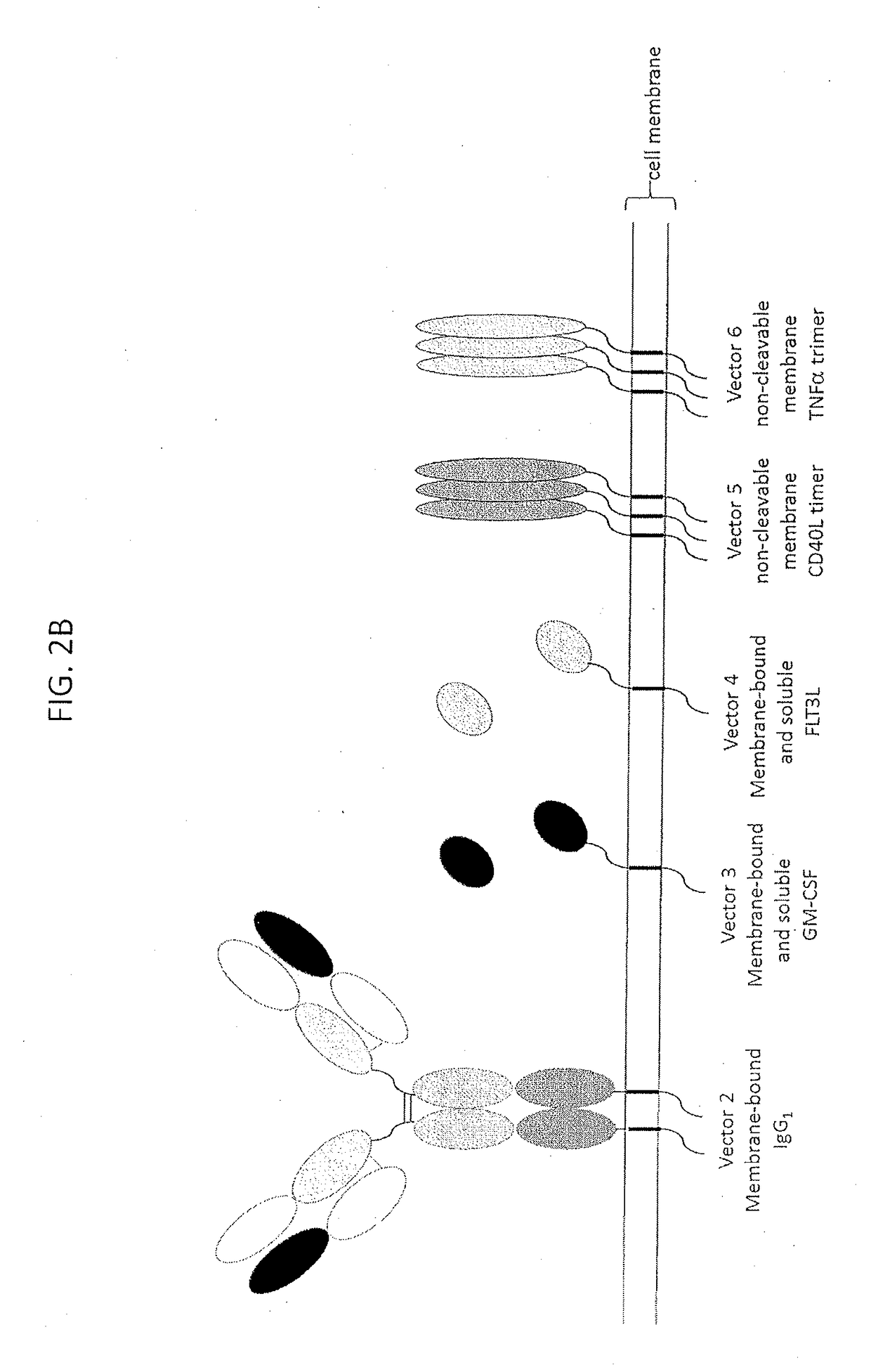Allogenic tumor cell vaccine
- Summary
- Abstract
- Description
- Claims
- Application Information
AI Technical Summary
Benefits of technology
Problems solved by technology
Method used
Image
Examples
example 1
[0367]Examples 2-5 make use of, but are not limited to, the methods described hereinbelow.
Western Blotting
[0368]Briefly, cells are lysed with cold lysis buffer and centrifuged to pellet cellular debris. Protein concentration of the supernatant is determined by a protein quantification assay (e.g., Bradford Protein Assay, Bio-Rad Laboratories). The lysate supernatant is then combined with an equal volume of 2×SDS sample buffer and boiled at 100° C. for 5 minutes. Equal amounts of protein in sample buffer are loaded into the wells of an SDS-PAGE gel along with molecular weight marker and electrophoresed for 1-2 hours at 100 V. Proteins are then transferred to a nitrocellulose or PVDF membrane. The membrane is then blocked for 1 hour at room temperature using 5% non-fat dry milk in TBST blocking buffer. The membrane is then incubated with a 1:500 dilution of primary antibody in 5% non-fat dry milk in TBST blocking buffer, followed by three washes in 20 Mn Tris, Ph 7.5; 150 mM NaCl, 0.1...
example 2
[0389]The described invention provides an approach for restoring immunologic balance in, for example, treating cancer, by targeting multiple immunomodulators with a single cellular platform. This approach enables the simultaneous modulation of multiple signals, and affords a spatially and temporally restricted method of modulating the immune response, an important feature that differentiates this methodology from traditional approaches using systemic administration of biologic agents to act on a single immunomodulatory pathway at a time.
[0390]According to one aspect of the disclosed invention, a tumor-type specific cell line variant expressing five or more recombinant peptides may be generated for use as a tumor cell vaccine to treat that cancer type. For example, a tumor cell line may be selected for modification and lentiviral transfection of recombinant immunomodulator sequences may be used to stably integrate immune modulators into the cell genome. Example 3 below describes 7 le...
example 3
[0420]A schematic of the core lentiviral vectors employed in the experiments described herein is shown in FIG. 2A and a schematic of the encoded proteins is shown in FIG. 2B. The promoter is human elongation factor 1 alpha (EF1a) promoter and the internal ribosomal entry sequence (IRES) is derived from encephalomyocarditis virus (EMCV). The core vectors are described in detail hereinbelow as follows:
Vector 1. Immunomodulator: scFv-Anti-Biotin-G3hinge-mIgG1 (to Generate Surface IgG)
[0421]A schematic of the organization of vector 1, used for the immunomodulator scFv-anti-biotin-G3hinge-mIgG1 is shown in FIG. 3A. The nucleotide sequence of vector 1 (SEQ ID NO. 47) is shown in FIG. 3B. Table 2, below, shows the vector component name, the corresponding nucleotide position in SEQ ID NO. 47, the full name of the component and a description.
TABLE 2NucleotideComponent NamePositionFull NameDescriptionRSV promoter 1-229Rous sarcoma virus (RSV)Allows Tat-independent productionenhancer / promotero...
PUM
| Property | Measurement | Unit |
|---|---|---|
| Fraction | aaaaa | aaaaa |
| Volume | aaaaa | aaaaa |
| Length | aaaaa | aaaaa |
Abstract
Description
Claims
Application Information
 Login to View More
Login to View More - R&D
- Intellectual Property
- Life Sciences
- Materials
- Tech Scout
- Unparalleled Data Quality
- Higher Quality Content
- 60% Fewer Hallucinations
Browse by: Latest US Patents, China's latest patents, Technical Efficacy Thesaurus, Application Domain, Technology Topic, Popular Technical Reports.
© 2025 PatSnap. All rights reserved.Legal|Privacy policy|Modern Slavery Act Transparency Statement|Sitemap|About US| Contact US: help@patsnap.com



